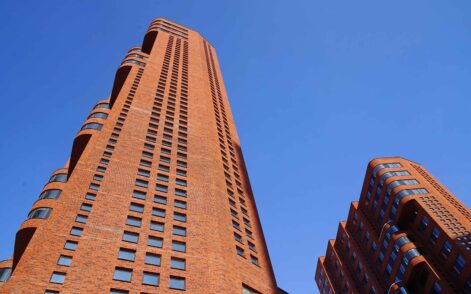The Hague
Wenckebach, 137 apartments
designed by
team pauldevroom + sputnik
completed
2024
program
12.500 m2 apartment building, 137 apartments
client
Staedion, The Hague
design team
Paul de Vroom, Henk Bultstra, Bert Karel Deuten, Nicolette Jongebreur, Oksana Savchuk, Angelo Novembre, Luuk Stoltenborg, Ivan Tam Chi Fung, Anna Maccagli
main contractor
Hillen & Roosen, Amsterdam
photo's
Ruben Dario Kleimeer
In two ways the building plays a role in the urban context:
On the one hand side the L-shaped low-rise of four layers is connecting the building to neighboring buildings, completing the city block. On the other hand side the eight-story volume on the corner provides the block with an accent that is comparable to the former church tower of the Majella Church that was once in this spot. This volume marks the square as one of the landmarks in the area.
The corners of the eight-story volume are rounded. This shape is continued down into the L-shape low rise and marks the entrances at the Noordpolderkade and the Wenckebachstraat. The entrances have a double height and give a see-through to the garden in the block.
The rounded corner have rounded glass panels. These specific windows give the design an iconic appearance.
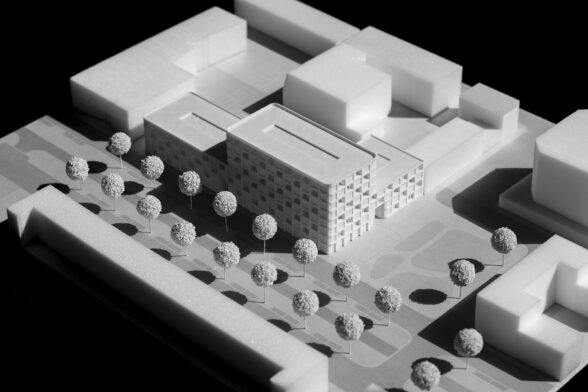
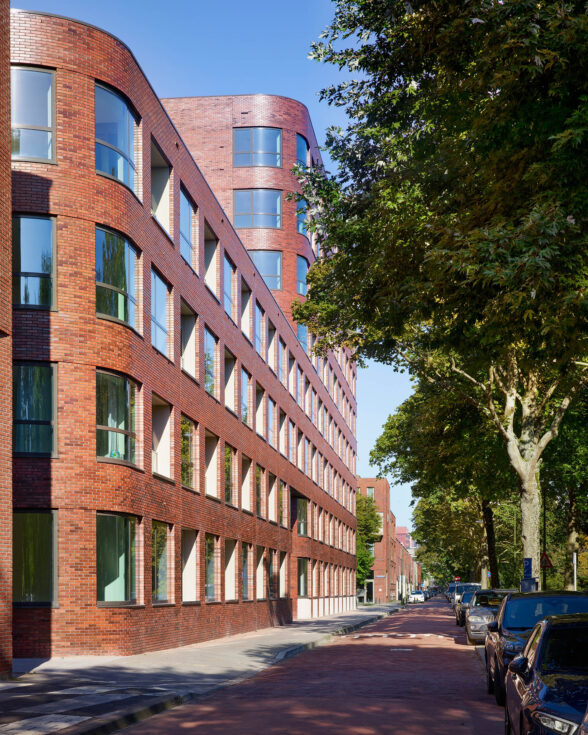
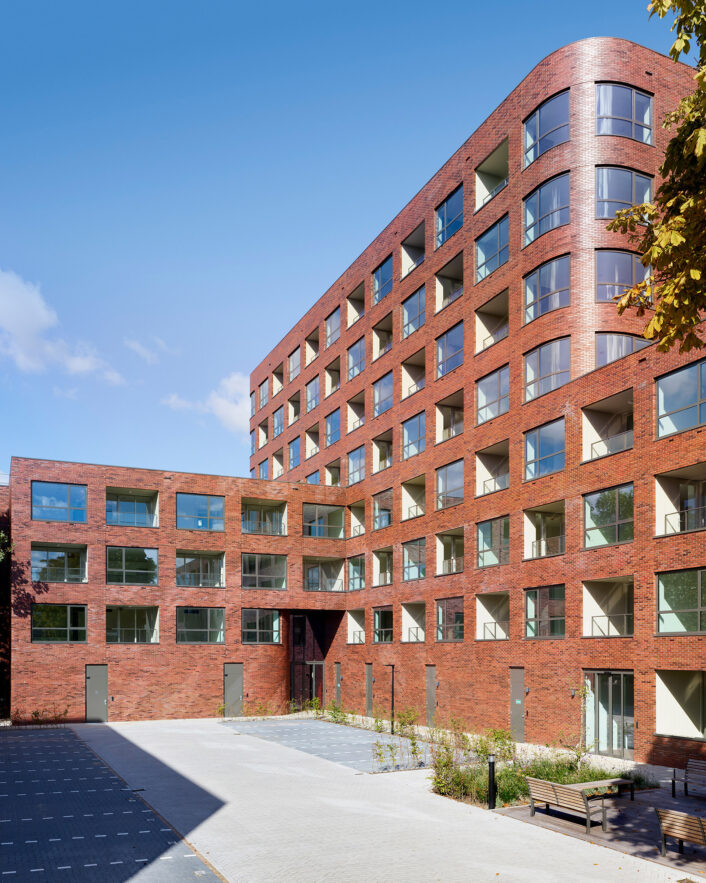
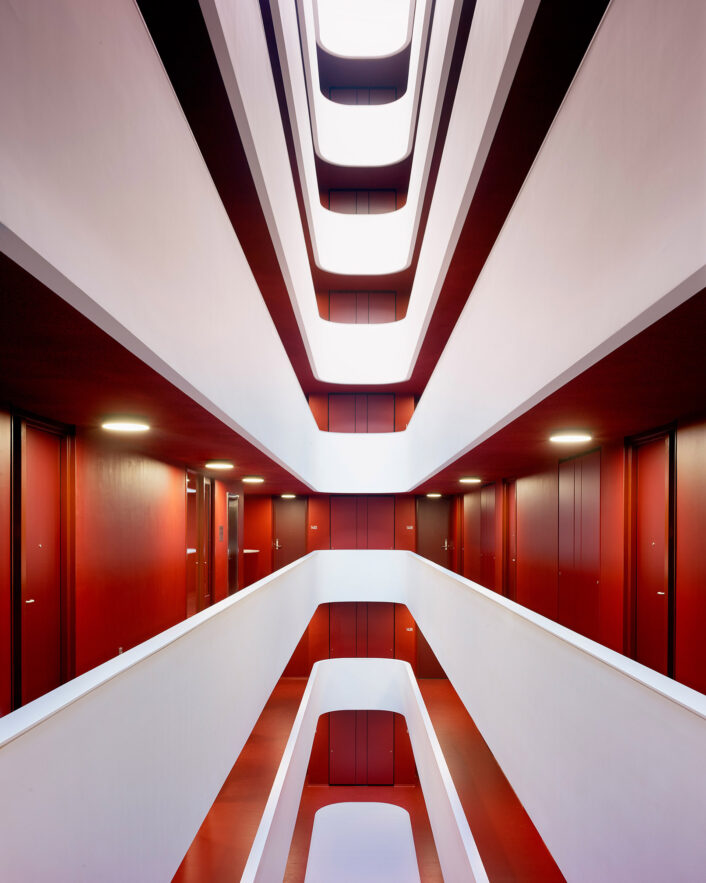
The central atrium corridor will have the function of a sub-street, where tenants meet each other and where views to the different floors enhance the liveliness in the building. Daylight enters from large skylights into the atrium and brings daylight to the interior “square” on the lowest level.
This building is designed for a sustainable future with invisible measures like solar panels on the flat roofs, decentralized booster water pumps and low temperature heating. Besides that the plans of the dwellings can easily be changed to accommodate future changes in use.
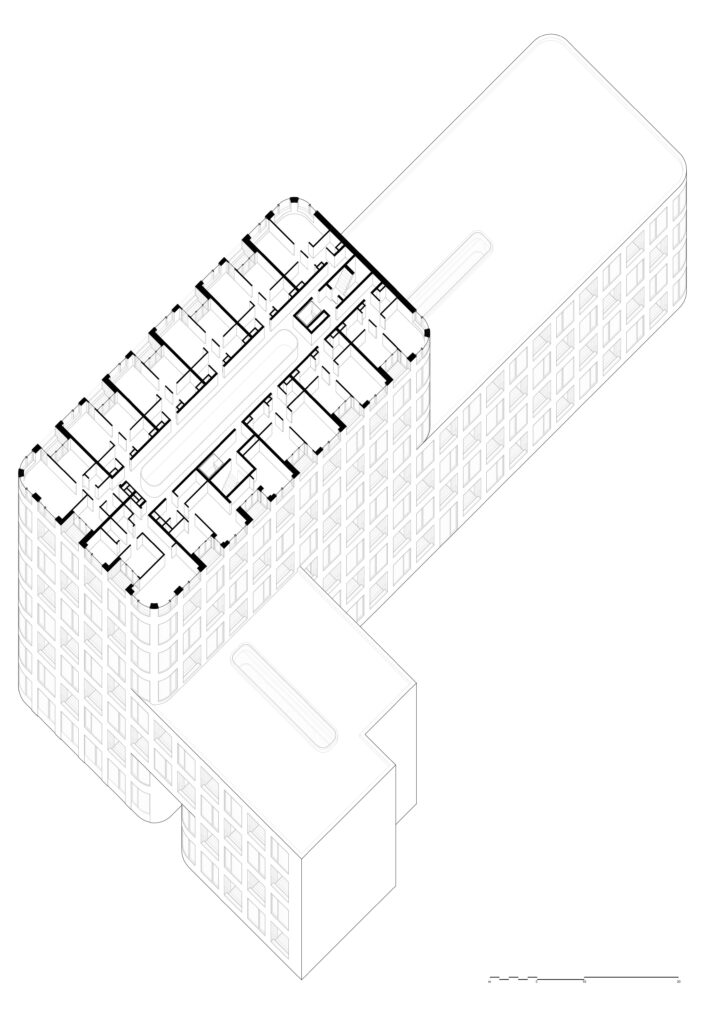
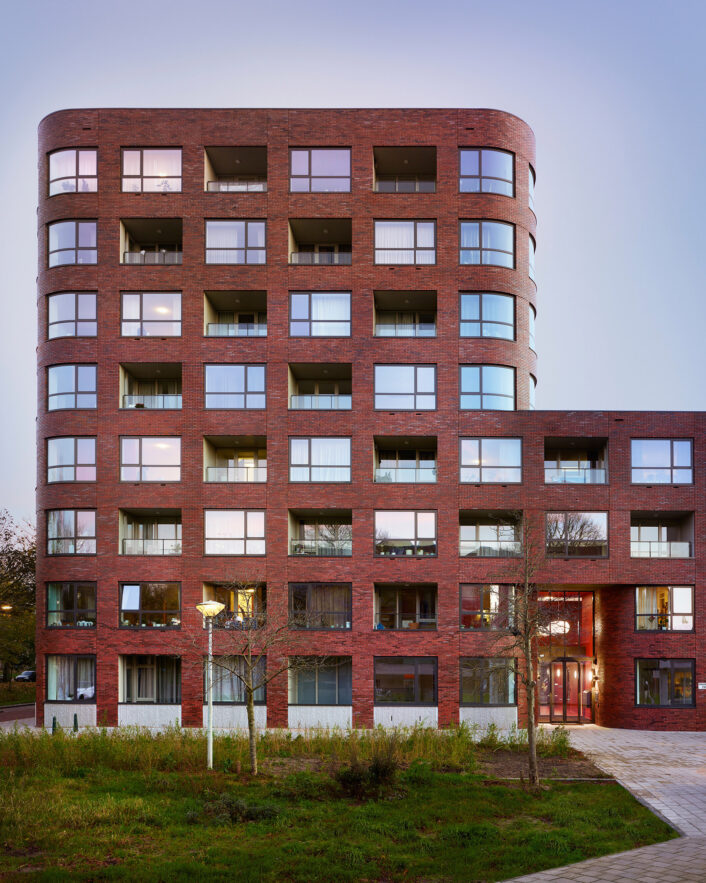
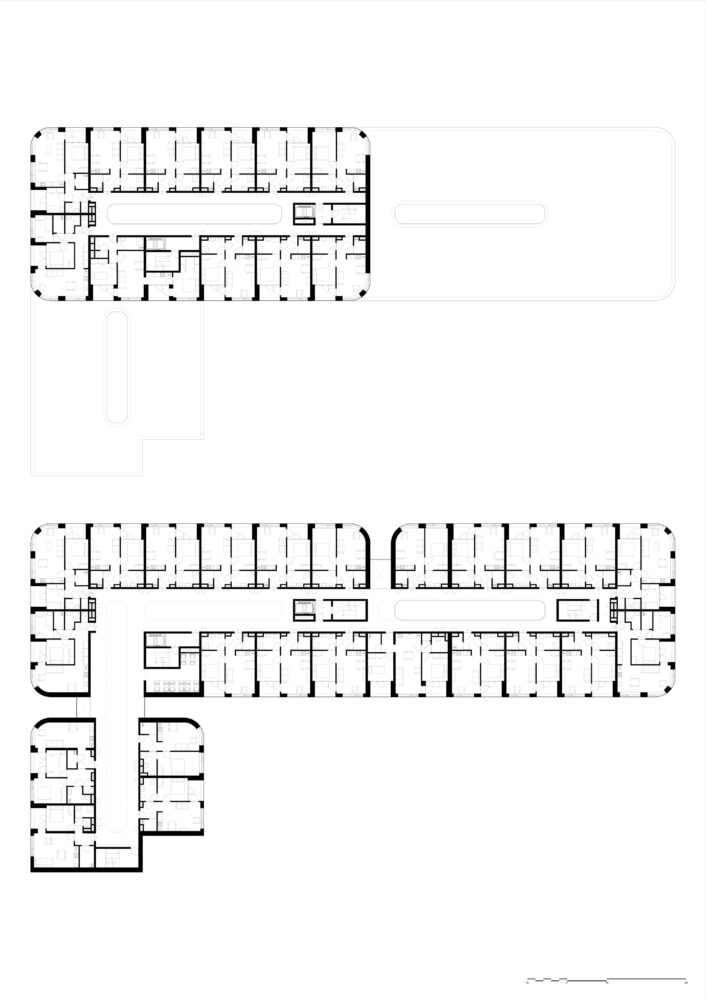
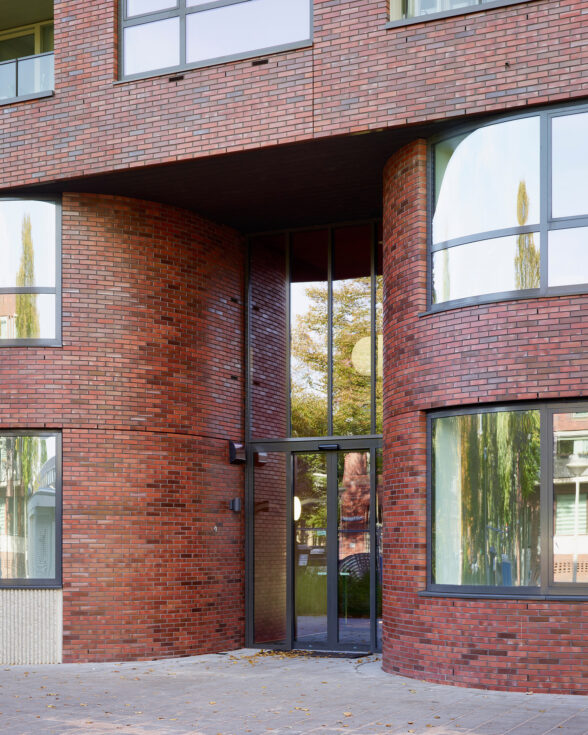
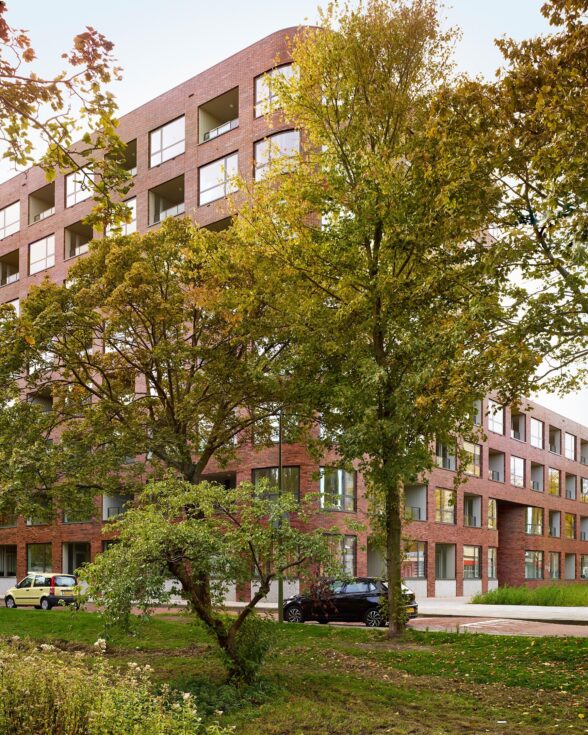
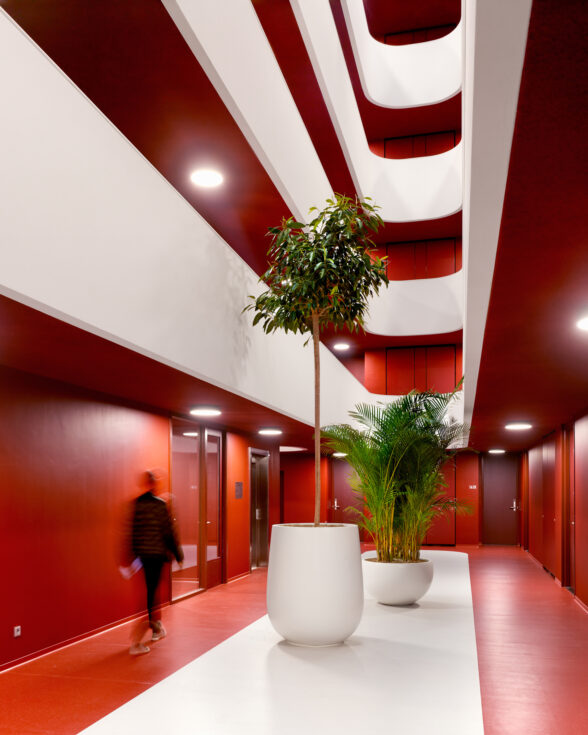
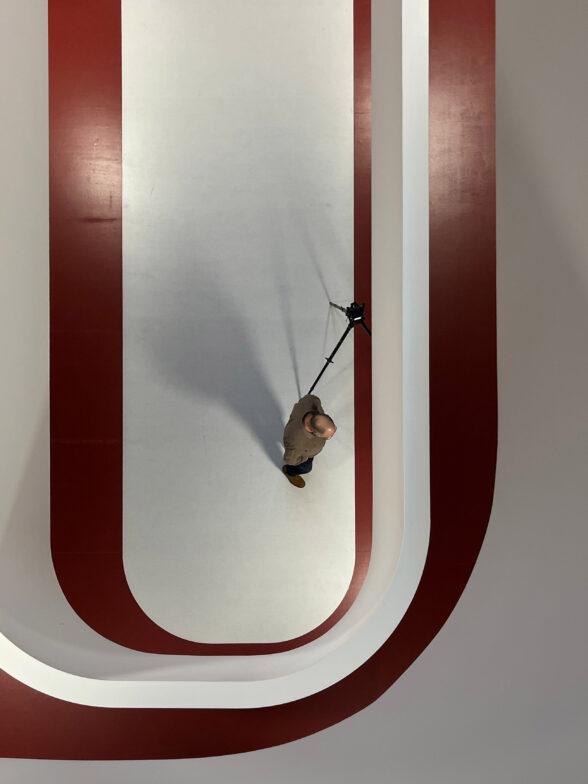
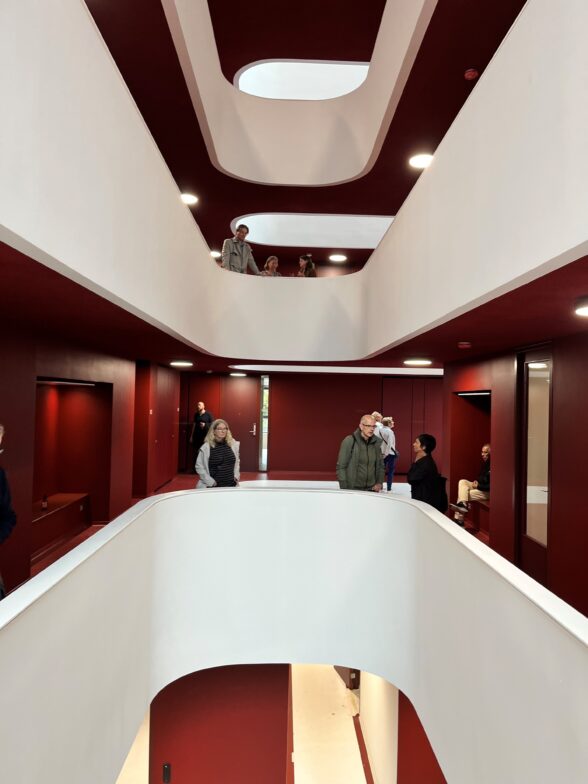
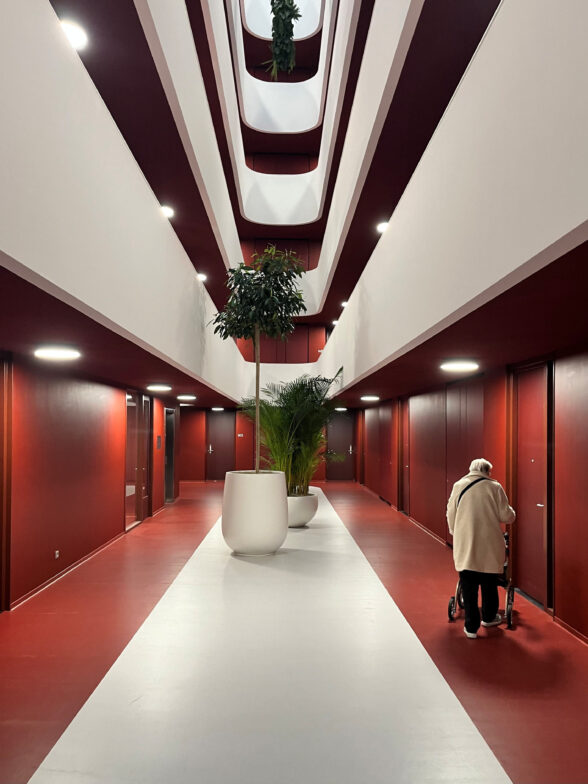
The corners of the eight-storey volume are rounded. This shape is continued in the L-shaped low-rise building and marks the entrances on the Noordpolderkade and the Wenckebachplein. The double-height entrances offer a view of the garden in the surrounding building block. The rounded corners have windows with curved glass. These specific windows give the design an iconic appearance.
The building, which is intended for older tenants, has 137 apartments, all of which are accessible via the atriums. The atriums, which extend over the entire length of 82 metres, form pleasant access routes from the main entrance to the apartments.
The majority of the homes consist of 2-room apartments of 45 m2. On the corners are 3-room apartments. All homes have their own outdoor space in the form of loggias.
The homes are accessed via a wide central corridor with long, narrow voids.
The loggias are applied alternately in the facade, creating a chessboard pattern. The homes that are directly above each other are each other's mirror image. As a result, the living rooms are always directly on the facade and the bedrooms are on the loggia.
The design of the building is based on a few principles that have been applied with a high degree of repetition. This creates a calm and balanced facade image of an all-sided building, which at the same time connects to the direct neighbors in the building block.
1. The building is a simple composed mass of 4 and 8 layers.
2. The corners of the volume parts are rounded. Where the high part sinks through the low part, as it were, the entrances are marked. This volume detail (on the scale of the building) determines the abstract character.
3. The chessboard pattern of loggias. By alternating the loggias, the facade gets a regular pattern without a dominant vertical or horizontal division. This contributes to the abstraction
4. The voids in the building. The voids are the same width everywhere, but differ in length. They all have the same rounded corners. The void balustrades are finished in bright white in contrast to the warm red that colours the floors, walls, doors and ceilings.
The apartments have a one-sided orientation and all have their own loggia. An important target group for this project are older tenants. The layout of the apartment plan is tailored to the specific needs of this group. The apartments are ‘care-ready’, which means that they can be easily adapted for wheelchair users.
A mirrored version of the two-room apartment is located above the standard floor plan, so that the loggias form a chessboard pattern in the facade view. In order to be able to continue this pattern on the corners, there are two versions of the three-room corner apartments.
Projects
Related
Rotterdam
Achterhaven, 37 city houses
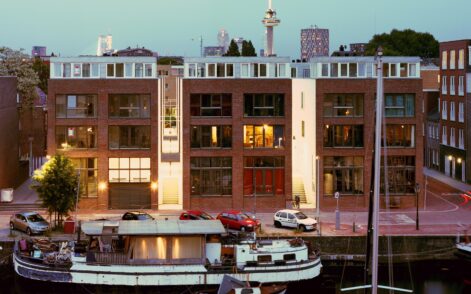
Bergen op Zoom
‘Bonus Beuk’, 17 row houses
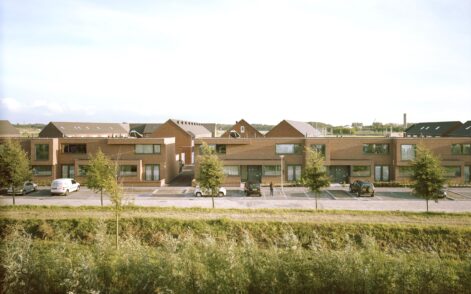
Moscow
Dutch House, 360 apartments
